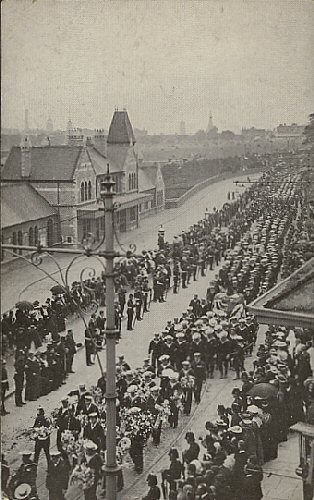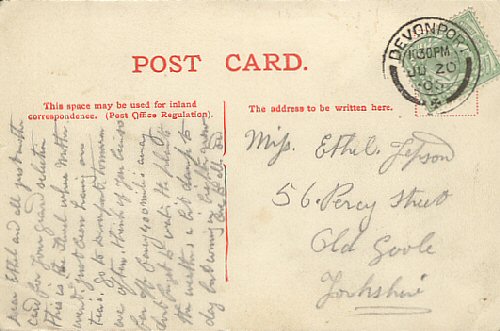
HM Submarine A8 (launched at Barrow, January 1905) was one of 13 A class submarines built prior to the 1st World War.
A8 was the third submarine to be lost as the Royal Navy got to grips with the new concept at the start of the 20th century – HMS A1 and A5 had already been lost on trials before A8’s fatal exercise on May 8, 1905, and in total six of the 13 A-boats launched before 1914 had foundered or sunk before the war began (prompting those in Naval circles to dub them “instruments of collective suicide).
A8, in company with A7, a torpedo boat and the cruiser HMS Forth, parent ship of the submarine squadron, had left Devonport in the morning for exercises off Looe, carrying a crew of 12 and seven trainees.
After clearing the Breakwater the two submarines carried out manoeuvres, after which A8 proceeded with open conning tower – standard practice at the time – as she prepared to dive.
Four of her crew, including her Commanding Officer, Lt A.H.C. Candy, were on the casing, and he noted the boat had an unsatisfactory trim, being bow down in the water.
Suddenly, without warning, the bow sank deeper, causing the stern to rear up, and she dived to the sea bed with her conning tower open.
The four men on the casing, including torpedo coxswain CPO William Waller, were swept off the casing and saved, but frantic efforts to rescue the remaining 15 proved fruitless – they were probably quickly overcome by poisonous fumes from the battery.
Two explosions followed, suspending further rescue attempts, and the boat could not be raised for four days, when it was towed back to Devonport and the bodies recovered.
The loss was a major blow for the city of Plymouth – it was the first major submarine disaster and had taken place within sight of the Hoe.
The entire route of the funeral procession, on June 15, was thronged by members of the public, and the half-mile long procession took 90 minutes to cover the two miles from the Dockyard Chapel to Ford Park Cemetery.
Nine of the men were buried with full Naval honours in the naval section of the cemetery, with a tenth buried in the Roman Catholic section.
The eleventh was buried privately the following day, and the remaining four were buried in their home towns.

